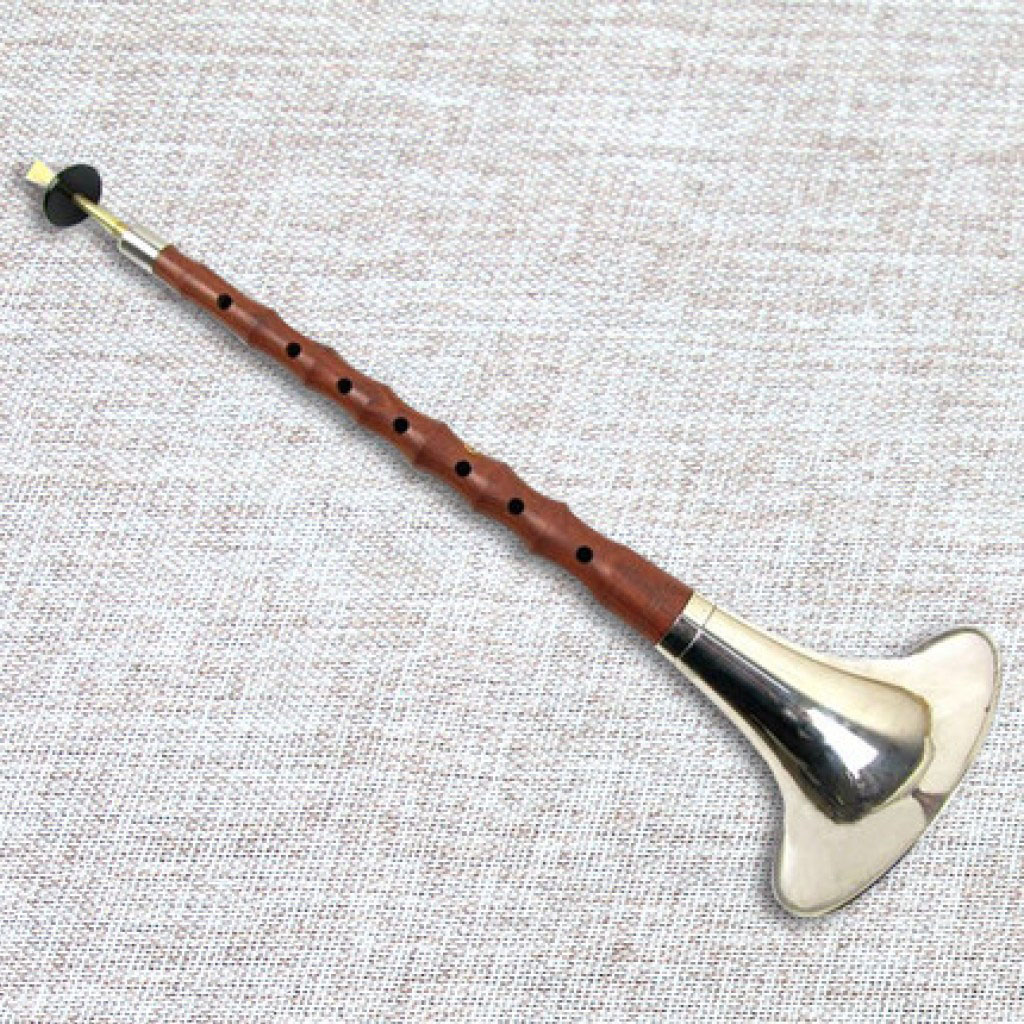suona overview

Suona (pinyin: suǒ nà) is a Chinese double-reed woodwind instrument. Also called Suannai, trumpet, advocacy. The traditional suona is composed of five parts: whistle, air card, intruder, rod and bowl. Eight holes are opened on the wooden conical tube (seven in the front and one in the back). The upper end of the tube is equipped with a thin copper tube, the upper end of the copper tube is covered with a double-reed reed whistle, and the upper end of the wooden tube has a copper bowl-shaped loudspeaker. Its pronunciation is cheerful and bold, high-pitched and loud, with softness in rigidity, and rigidity in softness. The modern keyed suona looks more like an oboe in a symphony orchestra.
As early as the 3rd century AD, with the opening of the Silk Road, suona was introduced to my country from Eastern Europe and West Asia. It is a member of the world's oboe family. After thousands of years of development, suona has its unique temperament and timbre. It is a representative national wind instrument in my country. The sound of the suona is majestic. The body of the suona is mostly made of rosewood and sandalwood, and it is conical. The top is equipped with a double reed made of reeds, which is connected to the wooden body through a copper core. The lower end is covered with a copper bowl. The keyed suona also has chromatic keys and treble keys, which expand the range and increase the expressiveness of the instrument. In Taiwan, it is called advocating; in the south, it is one of the "eight-tone" musical instruments. In Henan, it is called trumpet in Shandong. The traditional suona has classic repertoires such as Bainiao Chaofeng and Henan Erbaban.
The high-pitched suona is highly penetrating and infectious. In the past, it was mostly used in folk drum music classes and the accompaniment of local folk arts and operas. After continuous improvement, it has developed into traditional suona and keyed suona, which enriches performance skills and improves expressiveness. Symphony Orchestra Ensemble.
- Pinyin:suǒ nà
- time of origin:third century AD
- foreign name:suona horn (English), suona (transliteration)
- alias:trumpet, trumpet, tick
- category:wind instrument
overview of other similar instruments
- sanyanxiao overview
- Daguangxian overview
- Leiqin overview
- hahao overview
- yandundagu overview
- Han Xiaozheng overview
- Fang Xiang overview
- guanzi overview
- zhuqin (Dao Qin) overview
- zhuiqin overview
- bangzi overview
- three-stringed piano overview
- Gehu overview
- xiao overview
- xiaokonghou overview
- Konghou overview
- Sheng overview
- suona overview
- hulusi overview
- gushao overview
 渝公网安备 50010702504639号
渝公网安备 50010702504639号